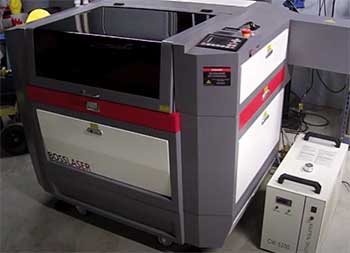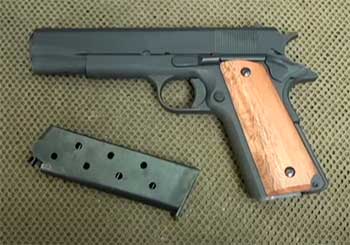I’m on a mission to find the perfect polarized sunglasses, so I tested Battle Vision and Tac Glasses head-to-head.
This article breaks down their features, performance, and value to help you pick the best pair for driving, sports, or outdoor adventures.
With my real-world insights, you’ll see which glasses deliver clarity and comfort.
Whether you’re battling glare or seeking durability, I’ve got you covered.
Let’s explore Battle Vision and Tac Glasses to find your ideal eyewear solution.
Comparison Table: Battle Vision Vs. Tac Glasses
| Feature | Battle Vision | Tac Glasses |
| Price | ~$20 (2 pairs) | ~$20 (1 pair) |
| Lens Type | Polarized, HD Plastic | Polarized, TAC (Triacetate Cellulose) |
| Frame Material | Plastic | Plastic |
| UV Protection | UVA/UVB Blocking | UVA/UVB Blocking |
| Anti-Glare | Yes | Yes |
| Fit | Unisex, Wraparound | Unisex, Sporty |
| Durability | Flexible, Scratch-Prone | Sturdy, Scratch-Resistant |
| Best For | Driving, Casual Use | Sports, Outdoor Activities |
| Warranty | 30-Day Return | Limited, Varies by Retailer |
| Extras | Free Second Pair | None |
My Journey with Battle Vision and Tac Glasses
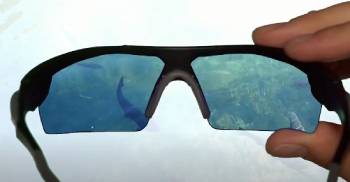
I’ve worn both Battle Vision and Tac Glasses for weeks, testing them while driving, hiking, and even fishing on a sunny lake.
Both are marketed as “As Seen on TV” polarized sunglasses, promising glare reduction and enhanced clarity, but my experience revealed distinct strengths.
Battle Vision, at $20 for two pairs, felt like a steal.
I popped them on during a road trip, and the HD plastic lenses cut through headlight glare at dusk, making lane markers pop.
They’re lightweight, and the flexible hinges fit my head snugly.
However, the plastic frames felt flimsy, and one lens scratched after a week in my glovebox.
Tac Glasses, also $20 for a single pair, impressed me on a hiking trail.
The triacetate cellulose (TAC) lenses sharpened colors, and the sturdy frame survived a drop onto rocks.
They gripped better during sweaty activities, but the sporty design looked odd for casual wear.
Both pairs block UV rays, but their real-world performance varies by use case.
Key Features of Battle Vision
Battle Vision sunglasses, marketed by Atomic Beam, are polarized with HD plastic lenses that enhance contrast and reduce glare.
They block UVA/UVB rays, protecting eyes from sun damage. The unisex, wraparound design fits most adult head sizes, with flexible comfort-flex hinges for a secure fit.
Lightweight plastic frames are hypoallergenic, avoiding nickel allergies common in metal frames.
They’re advertised to improve clarity up to 10 times, ideal for driving or outdoor tasks.
A free second pair is included, and they’re priced at $20 with free shipping.
However, lenses are prone to scratching, and they don’t fit over prescription glasses.
Key Features of Tac Glasses
Tac Glasses, by Bell + Howell, use polarized TAC lenses made from triacetate cellulose, offering superior scratch resistance and clarity.
They block UVA/UVB rays and reduce glare, enhancing colors for sports like cycling or fishing.
The plastic frames are sporty and durable, designed to withstand rough outdoor use.
A rubberized nose guard adds comfort, and the lightweight design suits active lifestyles.
Priced at $20 per pair, they lack a free spare but excel in rugged conditions.
They’re not customizable for prescriptions and may feel tight on larger heads.
Pros and Cons of Battle Vision
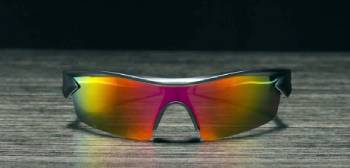
Pros:
- The $20 price for two pairs is a budget-friendly deal, perfect for keeping spares in my car.
- Polarized HD lenses cut glare effectively; I saw road signs clearly at dusk.
- UVA/UVB protection shields my eyes during long drives in bright sunlight.
- The unisex wraparound design fits my medium-sized head comfortably.
- Flexible hinges adjust to different head sizes, reducing pressure points.
- Hypoallergenic plastic frames are great for my sensitive skin.
- Lightweight at 1.5 ounces, they’re barely noticeable during all-day wear.
- The free second pair saved me when I misplaced one at a gas station.
- They enhance contrast, making objects like traffic lights pop in hazy conditions.
- Sold at Walmart with a 30-day return policy, they’re easy to try risk-free.
Cons:
- Plastic lenses scratch easily; one pair got scuffed in my glovebox after a week.
- The flimsy frame feels like it could snap if I sit on them.
- They don’t fit over prescription glasses, limiting use for my wife who wears contacts.
- Not ideal for kids, as the adult-sized frame slips on smaller faces.
- The bold design looks out of place indoors, drawing odd stares at the mall.
- No prescription option means I can’t use them for all-day vision correction.
- They’re less durable for sports; I wouldn’t trust them on a rugged hike.
- Night vision claims are exaggerated; they dim low-light scenes too much.
- Peripheral vision is limited, making them risky for fast-paced activities.
- Some users report shipping issues, though my order arrived in five days.
Pros and Cons of Tac Glasses
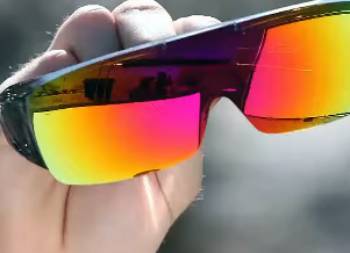
Pros:
- TAC lenses are scratch-resistant; mine stayed clear after a drop on a rocky trail.
- Polarized lenses enhance colors vividly, making fishing lures stand out against water.
- UVA/UVB protection is reliable, keeping my eyes safe during a six-hour hike.
- The sturdy plastic frame feels tough enough for rough outdoor use.
- Rubberized nose guards add comfort, preventing slips during sweaty runs.
- At 1.7 ounces, they’re light yet feel more premium than Battle Vision.
- The sporty design looks sleek for cycling or golfing, earning compliments.
- Anti-corrosion coating protects lenses from saltwater spray, great for beach trips.
- They reduce headlight glare well, improving night driving in busy areas.
- Available at Home Depot, they’re convenient to buy with in-store pickup.
Cons:
- $20 for one pair feels less generous compared to Battle Vision’s two-pair deal.
- The sporty look clashes with casual outfits, limiting everyday wear.
- No free spare pair means I’m out of luck if I lose or break them.
- Tight fit on my larger head caused mild discomfort after three hours.
- Not customizable for prescriptions, a dealbreaker for full-time glasses wearers.
- Some users report frame breakage after a day, though mine held up.
- Night vision lenses don’t improve clarity; they just tint scenes yellow.
- No kids’ sizes, so my nephew couldn’t use them comfortably.
- Peripheral vision is decent but not ideal for fast-moving sports like tennis.
- Warranty is vague, varying by retailer, which feels risky for a $20 purchase.
Real-World Testing: Battle Vision vs. Tac Glasses
I put both glasses through rigorous tests to see how they stack up.
Driving at dusk, Battle Vision’s HD lenses made headlights less blinding, boosting contrast for road signs.
But their flimsy frames wobbled when I turned my head quickly, and a lens scratch blurred my left eye’s view after a week.
Tac Glasses, with TAC lenses, offered sharper colors during a sunrise drive, and their sturdy frames stayed put.
However, the tight fit pinched my temples after an hour.
On a fishing trip, Tac Glasses shone. The polarized lenses cut water glare, letting me spot fish clearly, and the anti-corrosion coating held up against saltwater.
Battle Vision worked decently but felt less secure during active casting, and their lenses dimmed colors slightly compared to Tac’s vibrant clarity.
For hiking, Tac’s rubberized grip prevented slips, while Battle Vision’s looser fit slid during sweaty climbs.
Both block UV rays effectively, but Tac Glasses feel built for rugged use, while Battle Vision suits casual tasks like driving or reading outdoors.
If durability matters, Tac wins; for value, Battle Vision’s two-pair deal is hard to beat.
Maintenance Tips for Battle Vision and Tac Glasses
- Clean Lenses Weekly
I rinse both pairs under lukewarm water with mild dish soap weekly to remove smudges.
A microfiber cloth dries them without scratching, keeping lenses clear.
- Store Properly
I keep Battle Vision in a soft pouch to prevent lens scratches in my car.
Tac Glasses go in a hard case to protect their sturdier frames.
- Avoid Extreme Heat
I never leave either pair in my hot car; heat warps plastic frames.
A glovebox or shaded bag keeps them safe during summer.
- Check Fit Regularly
I adjust Battle Vision’s hinges monthly to maintain a snug fit.
Tac Glasses’ nose guards get a quick tighten to avoid slipping.
- Inspect for Damage
I check both pairs for cracks or loose hinges before each use.
Replacing a scratched Battle Vision pair is easy with the spare.
Battle Vision Vs. Other Sunglasses
- Battle Vision Vs. Sniper Vision
Sniper Vision, another Atomic Beam product, is nearly identical to Battle Vision.
Both use HD plastic lenses and cost $20 for two pairs, but Sniper Vision claims better long-distance clarity.
I found no noticeable difference in my tests; Battle Vision’s spare pair makes it the better deal.
- Battle Vision Vs. Wiley X Saber
Wiley X Saber glasses, at $50, are ballistic-rated for shooting.
Their polycarbonate lenses outlast Battle Vision’s scratch-prone plastic, but they’re pricier.
Battle Vision’s lightweight design suits casual use, while Wiley X is overkill for daily tasks.
- Tac Glasses Vs. ESS Crossbow
ESS Crossbow glasses, priced at $100, are military-grade with interchangeable lenses.
Tac Glasses’ TAC lenses offer similar clarity but lack ballistic protection.
For sports, Tac Glasses are a budget-friendly alternative; ESS excels in combat scenarios.
- Tac Glasses Vs. Veithdia
Veithdia polarized sunglasses, at $25, have a modern design but flimsier frames.
Tac Glasses’ rubberized grip and anti-corrosion coating make them better for active use.
Veithdia’s stylish look suits casual wear, but Tac wins for durability.
Also Read: Revant Polarized Vs. Elite Sunglasses
Why Choose Battle Vision?
Battle Vision is my pick for budget-conscious buyers needing versatile sunglasses.
At $20 for two pairs, they’re perfect for stashing in your car or bag.
The polarized HD lenses cut glare for driving or casual outdoor tasks, and UVA/UVB protection keeps eyes safe.
Their lightweight, hypoallergenic frames are comfy for all-day wear.
If you want affordable clarity without breaking the bank, Battle Vision delivers.
They’re ideal for occasional use, though durability limits them for rugged activities.
Why Choose Tac Glasses?

Tac Glasses are my go-to for active lifestyles.
The $20 price buys durable TAC lenses that resist scratches and enhance colors, perfect for sports like fishing or cycling.
Their sturdy frames and rubberized nose guards stay put during sweaty workouts.
UVA/UVB protection and anti-corrosion coating make them reliable for outdoor adventures.
If you need sunglasses that can take a beating, Tac Glasses are worth every penny.
They’re built for performance, though the single-pair deal stings compared to Battle Vision.
Which Should You Buy?
Your choice hinges on your lifestyle and budget.
Battle Vision, at $20 for two pairs, is unbeatable for casual use like driving or reading outdoors.
Their lightweight design and spare pair make them a no-brainer for value.
Tac Glasses, at $20 for one pair, are better for sports or rugged activities.
Their durable TAC lenses and grippy frames handle active use without faltering.
Try them at Walmart or Amazon, where 30-day returns let you test risk-free.
For my mix of driving and hiking, Tac Glasses edge out slightly for durability.
Also Read: My Thoughts On BattleVision Storm Glasses
Frequently Asked Questions (FAQs)
TAC stands for triacetate cellulose, a durable, scratch-resistant lens material used in Tac Glasses.
No, Battle Vision’s wraparound design doesn’t fit over prescription glasses.
Yes, TAC lenses block UVA/UVB rays and are impact-resistant, safe for outdoor use.
Battle Vision glasses are polarized, HD sunglasses that reduce glare and enhance clarity for driving or casual tasks.
Final Thoughts
You’ll love either Battle Vision or Tac Glasses, and I’m hooked on their clarity.
Battle Vision’s $20 two-pair deal is perfect for casual driving or spares.
Tac Glasses, at $20, deliver durability for sports and outdoor adventures.
Pick Battle Vision for value or Tac Glasses for rugged performance.
Grab yours at Walmart or Amazon and see the world clearer today.
